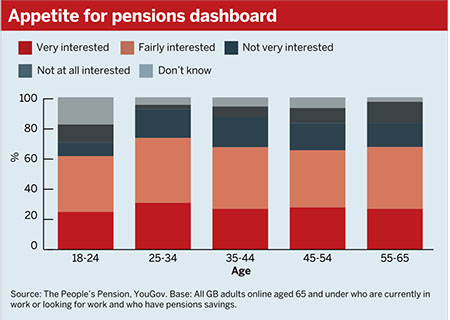Pension dashboards enabling savers to view their retirement assets in one place are set to become a reality, but commentators have questioned how they will be funded and some fear they could do “more harm than good”.
The idea of the pensions dashboard was floated in the Financial Conduct Authority’s review of the annuities market last year and was championed by former pensions minister Steve Webb earlier this year.
Digital services body Origo this week announced plans to develop a ‘pension register service’ within two years, into which government agencies, pension providers and administrators can feed individuals’ data on state pension and lifetime savings.
Paul Pettitt, managing director at Origo, said the dashboard would benefit the government’s Pension Wise service in particular, which requires members to be clear on what pension assets they have in order to receive appropriate guidance.
He said: “It will make guidance easier as you’ll know what you’ve got.”
If Origo’s pensions dashboard isn’t perfect, people will switch off and disengage. It could do more harm than good
Gareth Davies, Capita
However Gareth Davies, head of research and engagement at employee benefits consultant Capita, raised doubts over the one-stop-shop model.
He said: “Online shopping and banking have raised expectations from individuals as to just what is possible and our concern would be that if Origo’s pensions dashboard isn’t perfect, people will switch off and disengage. It could do more harm than good.”
Davies said that unless every scheme and provider was on board with the initiative, the pensions dashboard would lose its value and could “ultimately fail in its objective”.
He added: “The idea of a one-stop-shop pensions dashboard is certainly attractive, but it comes with significant challenges, in terms of implementation, cost and real appetite… ensuring data is up to date with real time valuations cannot be underestimated – it requires continual re-investment.”
Dashboard demand
The pensions dashboard has already found favour among savers, according to a March study of 1,370 respondents by mastertrust The People’s Pension with YouGov.

It found that three in five people under the age of 65 do not know how much they have saved for their retirement and seven in 10 respondents said they would like to view their pension savings in one place on a dashboard.
But Mark Pemberthy, director at consultancy JLT Employee Benefits, said while the project is a welcome move in terms of driving engagement with pensions, it was not yet clear how it would be funded.
How that expenditure and ongoing costs are recovered has yet to be determined, however any model has to embrace the need to deliver benefit to consumers
Paul Pettitt, Origo
He said: “There are still very big questions unanswered in respect of funding and how appropriate data standards can be agreed for all active and legacy pension administrators.”
Pemberthy added that the service would have to be developed in “incremental” steps to effectively incorporate the breadth of the UK’s pension provision landscape.
“It is such a big task to build a universal platform which aggregates data from all pension benefits – state, public, private, DB, DC, legacy and personal pensions,” he said.
Who pays?
Pettitt said Origo and each of the participants in the project would fund its own development activities.
But he added: “How that expenditure and ongoing costs are recovered has yet to be determined, however any model has to embrace the need to deliver benefit to consumers.”
Origo is working with between 15 and 20 third-party administrators in developing the dashboard and Pettitt said gaining a critical mass is key to getting it off the ground.
“We then have to work towards achieving the broadest possible coverage through the most effective means, which initially is through administrators and EBCs,” he said.
“We will hold discussions with industry bodies and those involved, to consider how best to enable smaller schemes and their members to participate.”
Pettitt added that while the project has been slated to launch in two years’ time, the priority is to ensure the system is safe.
“We have to be comfortable with the data and security,” he said.














